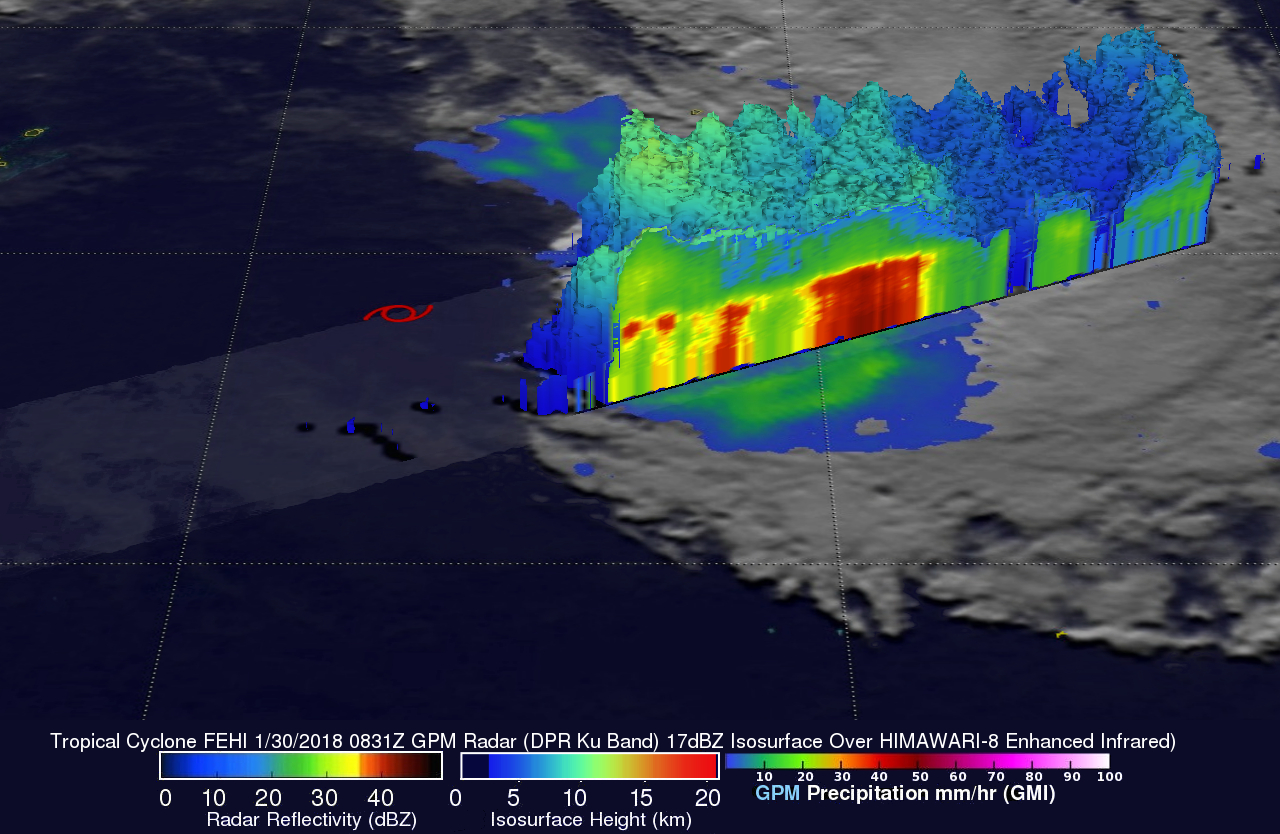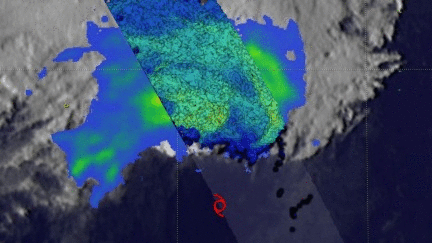GPM Views Sheared Tropical Cyclone Fehi
The GPM core observatory satellite flew tropical cyclone FEHI on January 30, 2018 at 0831 UTC. GPM revealed that precipitation was only located around the southern side of FEHI's circulation. Strong vertical wind shear had caused the surface center of circulation (shown with a red symbol) to be displaced well to the north of the heaviest rainfall. The satellite found that some convective storms on the southern side of the tropical cyclone were still producing very heavy precipitation. GPM's Microwave Imager (GMI) and Dual Frequency Precipitation Radar (DPR) instruments revealed rainfall in a few powerful storms on FEHI's southern side that were dropping rain at a rate of over 164 mm (6.5 inches) per hour.
This 3-D view of tropical cyclone FEHI was produced using data captured by the GPM satellite's radar (DPR Ku Band) instrument. This simulated view, looking from the west toward the east, shows the shearing of tropical cyclone FEHI's convective storms toward the south of the tropical cyclone's low level center of circulation. Some of the convective storm tops south of FEHI's center were found by GPM's radar to reach heights of above 13 km (8 miles).
Tropical cyclone FEHI is moving southward and is expected to transition to a subtropical system.




